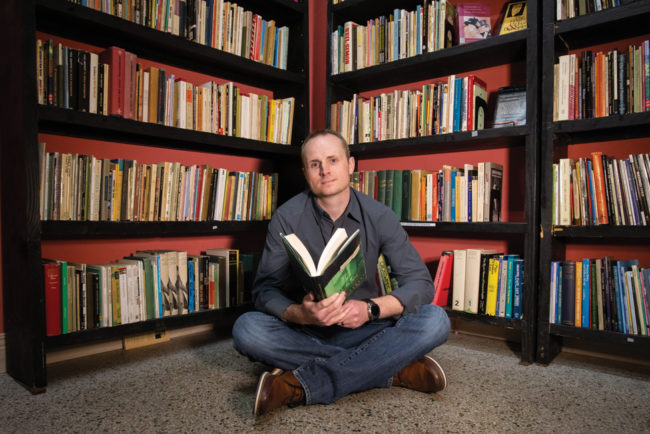
by TRACY ZOLLINGER TURNER
photography by JIM KRAUSE
Growing up, Michael Koryta had a soulful relationship with loaded bookshelves. Enthralled by suspenseful stories in the books that surrounded him at home, there was one place in town he could count on to find new realms of adventure.
“The best day in the world was a trip to the Monroe County Public Library,” he says. “I’m not exaggerating that it was truly that exciting. I’m still so emotionally attached to that library that I have never really made my peace with the remodel that they did probably 25 years ago. Browsing the library, there was just that wonderful feeling of going by the cover, and then finding someone you really like. It’s still exciting for me to find a new writer who has a bunch of books out there.”
At 38, Koryta is now one of those authors who—if you happen to be someone who just discovered his work—has a considerable store of material to mine. He has published 16 novels, including New York Times bestselling mystery, suspense, and supernatural thrillers that have been translated into more than 20 languages. He has collected multiple awards, among them the 2008 Los Angeles Book Prize for mystery/thriller (Envy the Night) and a 2015 Barry Award for best thriller (Those Who Wish Me Dead), and has been nominated for several others, including The Edgar (after Edgar Allen Poe), the Shamus, and The Golden Dagger.
The jackets of his books are covered with rave reviews from veteran luminaries of popular fiction, including Stephen King, Michael Connelly, Dean Koontz, and James Patterson. And this year, Koryta moves into their storytelling ranks as an author who some may discover for the first time at the movies. Those Who Wish Me Dead is set for release in theaters and on HBO Max on May 14, starring Angelina Jolie.
“I think as soon as I understood that you could write books as a job, I really did want to do that.”
A Townie For Sure

Born in Bloomington, Koryta attended Arlington Heights Elementary School, Tri-North Middle School, Bloomington High School North, and Indiana University. “You can’t get much more townie than that,” he says. His parents moved here from Cleveland, Ohio, in the mid-1970s, when his father, Jim, took a position as a senior electrical engineer at IU. His mother, Cheryl, taught first grade at Elm Heights and Grandview Elementary schools, and he has an older sister, Jennifer—an occupational therapist in Indianapolis.

“I think as soon as I understood that you could write books as a job, I really did want to do that,” says Koryta. “I drove the reference librarians at the Monroe County library completely nuts. I would ask them to find me mailing addresses so I could get in contact with writers I really liked, and bless them, they were always patient with me.”
Several of the writers he sought had been favorites of his father—young adult suspense novelists from the 1940s and ’50s—“which really upped the stakes for those poor reference librarians,” he says. But they did locate the mailing addresses or confirmed that there wasn’t one because the author was dead.
“I have come to believe that a reference librarian is more likely to actually get the information you want than any private investigator on the planet,” he says. “They are just more diligent. They understand more tools.”
Sometimes Koryta would hear back from the authors, sometimes not. But in between writing those letters, reading, and playing baseball, he kept on attempting to write his own books throughout elementary and middle school.
“I’ve never seen a kid put things to work so quickly and adapt. He was always trying to get better and better.”
High School Years
In high school, Koryta encountered several opportunities that began to steer him in the direction of his career. Michael Hefron, the general manager of The Herald- Times, happened to be Koryta’s next-door neighbor. “I had been doing yard work for them since I was little,” he says. Koryta started working for The H-T as a telemarketer when he was 14. Then he helped on a column called “Hoosier History,” which highlighted news events from the past. “I was gathering that stuff down in the newspaper morgue, which is still one of my all-time favorite places,” says Koryta.
At North, students were able to participate in an independent study program that allowed them to work with a qualified mentor in the community. “When you’re 15, you feel like you’re an adult—you take yourself seriously in that way,” says Koryta. “The independent study program was perfect for that because it shot you out into the world and you were dealing with adults who were not teachers or parents. I responded to that better than the traditional classroom.”
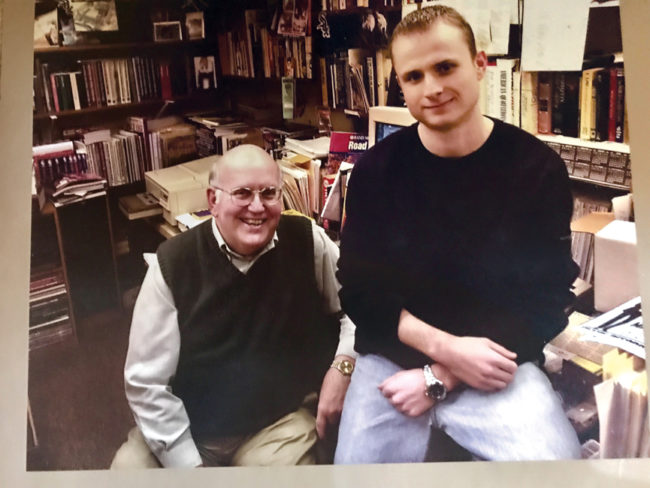
Koryta managed to connect with Herald-Times Sports Editor Bob Hammel. That friendship has remained important to him ever since. “He was so great to me,” Koryta says. “He treated me like a serious writer instead of a high school kid.”
“He was 15 when I met him, but he looked about 12,” Hammel says of the first time Koryta showed up in his office, offering up an essay he had written. While Koryta was clear that he didn’t have major sports writing ambitions, he was anxious for professional feedback on his writing overall. “I just savaged it with a red pen, made a lot of corrections and extreme cuts,” says Hammel. “Later on, he would say that when he got it back, he thought I had nicked an artery because it was so red.”
But Koryta took the criticism in stride. “I knew I was in trouble because I had written him a note thanking him for taking the time to do this. And then I saw that he corrected the thank you note. He can deny it all he wants,” says Koryta,” but I still have a copy.”
Koryta made quick work of the writing suggestions that Hammel had offered. “When I read a second piece, every point I’d made, he’d already absorbed and put into play,” Hammel says. “I’ve never seen a kid put things to work so quickly and adapt. He was always trying to get better and better. He was just startlingly good, and it was a such a treat to work with someone that responsive, and also that creative.”
“I remember telling my roommate … , ’So, they’re going to publish my book.’ And he just looked at me in confusion: ‘You wrote a book?’”
The Secret Writer
As Koryta has been doing interviews to promote his newest book, Never Far Away, he has been reflecting on “how quiet I was about what I wanted to do” as a teenager. He worked on his novel writing outside of the purview of school. “I didn’t even talk about my books with
anyone. None of my friends would have known,” says Koryta. And although Hammel warned that he personally knew “nothing about fiction,” he was the only person with whom Koryta shared his fiction manuscripts.
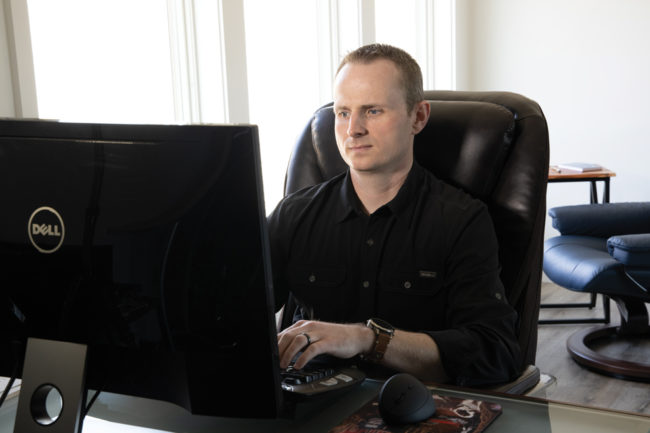
If it seems incredible that Koryta would be working on entire novels outside of his high school courses, he says, “If you had seen my approach to schoolwork, it wouldn’t seem as amazing.” Koryta describes his high school self as “an indifferent student.” But English teachers Bill Hayes and Steve Bailey were two “excellent teachers” who challenged him. And it was Bailey who nudged him toward outside-the-classroom experiences, even sponsoring him for another independent study into the art of standup comedy.
“I suspect that he was hoping I might channel my disruptive comedic efforts into a venue that was not his classroom,” says Koryta. “That tactic didn’t work for him, but he ultimately won the long game, as he required me to perform my material in front of a W-131 [writing composition] class that was composed of all seniors, and all girls. When you are a high school sophomore and a guy, there is no more intimidating room on the planet. I threw out the first pitch at Yankee Stadium a few years ago and thought, ‘This is almost as daunting an environment as that W-131 class. Almost.’”
By the spring of his senior year of high school, Koryta was a regular, part-time contributor to The H-T, writing sports stories, general features, and eventually the weekend police beat. “I love being around the newsroom,” he says. “There’s an energy to a newsroom that is not like anything else you ever find. You’re forced to deliver, you’re educated very quickly, and you cannot be precious with your writing.”

When Koryta was in college at IU, Hammel was co-writing former IU basketball coach Bob Knight’s memoir, Knight, for St. Martin’s Press. He lobbed Koryta’s first manuscript directly to one of their editors. “No one gets those kinds of opportunities in general, let alone when you are 18 or 19,” says Koryta. Tonight I Said Goodbye, the first of his mystery series featuring protagonist Lincoln Perry, was accepted when Koryta was 19 and published when he was 20. It was a surprise to some who knew him, and not only because of his youth.
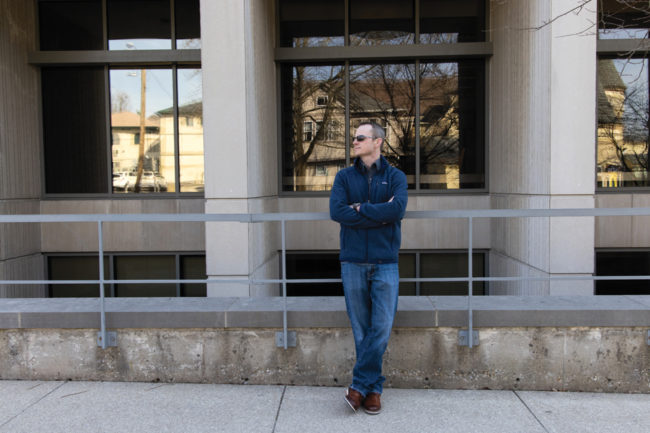
“I remember telling my roommate, Kaleb Ryan, who was my best friend all though high school and my only roommate throughout my IU experience, ‘So, they’re going to publish my book.’ And he just looked at me in confusion: ‘You wrote a book?’”
His second novel was published before he graduated with his bachelor’s degree in criminal justice. “I kept my writing to myself to such an extent that I was actually unable to graduate on time,” he says. “I had enough credit hours, but I was one required course short for the College of Arts and Sciences, called the ‘intensive writing requirement.’
“At that point, I had published two books in—I think—10 languages? And maybe 1,000 newspaper articles for The H-T as well as some freelance magazine pieces. So, I petitioned IU with all this evidence that I had written intensively during my time there, and they said, ‘Nope, you’ve got to do this,’” he recalls. “IU was not about to breach its standards.”
Another independent study that Koryta took up in high school had an influence on him that endures materially and creatively— this one with Don Johnson of Trace Investigations. After his initial independent study was completed, he continued to do private investigation (PI) work through college and after— a day job that spooned well with his career as an author of suspense novels.
“I plucked her out of academia and into the bold world of private investigation. One of my greatest bait-and-switch routines.”
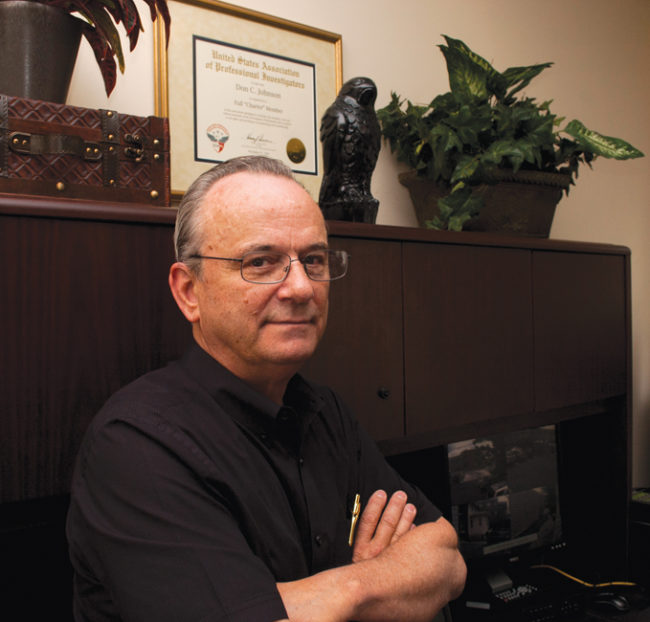
“I worked on everything from insurance fraud cases to wrongful death, missing persons, even a death penalty defense case,” he says. “The work ranged from interviewing to surveillance to public records research. We had casework that ran the gamut—I can’t think of any specific area that we didn’t touch on, over time. I feel like I got at least a glimpse of a lot of that world.”
“When PI work stopped being my day job, I would still come back sometimes if Don needed me, and I was in town,” he continues. “If Don called me tomorrow and said, ‘I’ve got a really interesting case, would you help?’ I would say yes.”
Private investigators have been the protagonists in several of Koryta’s novels. “I haven’t taken a plot from a case that we worked, but components of cases that I worked show up in, I’ll bet, 75% of my books,” he says. “And the people that I encountered in PI work show up in every book.”
Love, Marriage, Menagerie
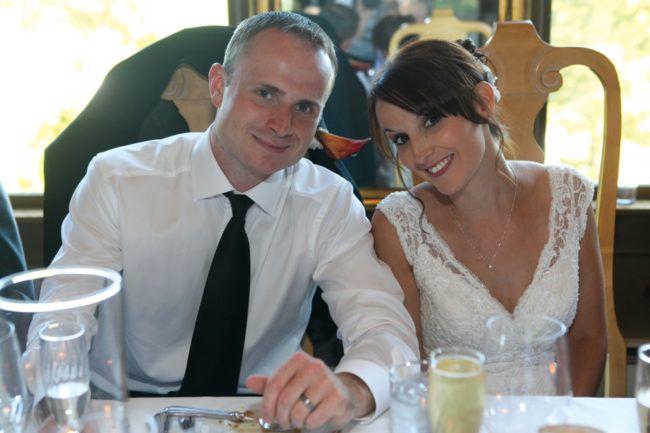
Koryta met his wife, Christine, when he was 22, at a writers’ conference that she was directing in Florida. They married in 2012 in Kennebunkport, Maine. She is now a licensed PI who manages the background screening division of Trace Investigations. “I plucked her out of academia and into the bold world of private investigation,” he says. “One of my greatest bait- and-switch routines.”
The couple used to split time between St. Petersburg, Florida, and Bloomington. For the past six years, they’ve lived both in Bloomington and Camden, Maine. They share a small menagerie, including two cats and a dog, Lola, who, Koryta says, “the shelter called a shepherd mix, I think possibly because you have to pay a permit fee for a coyote. I’m not sure she’s a domestic dog at all.” They also have an 18-year-old cat, Marlowe, who was rescued

by a newspaper colleague from the side of the road, and another cat that Koryta encountered seven years ago at a Civil War-era cemetery at Green’s Bluff in Owen County.
“There was an all-black kitten sitting on a gravestone,” he says. “Given the type of books that I write, I should be smart enough not to take that cat home, but somehow he ended up here. We gave him the name—John Pryor— that was on the gravestone to keep the peace.”
Last year, Koryta developed an alter-ego to handle his first supernatural thriller in over a decade. “Scott Carson” released The Chill, a “terrific horror/suspense/ disaster novel” that “grips from the first page,” according to Stephen King. Named in homage to the talent scout who signed baseball player Roy Hobbs in the Bernard Malamud novel and movie The Natural, Carson “will handle the dark side of things. Or, I guess, the weird, creepy side,” says Koryta.
“There was some resistance to my going back to another supernatural story and concerns of essentially, ‘Is it on brand? What is the brand? Is he a thriller writer? Does he do ghost stories? We need to figure this out. We’ve got to put them in a box.’ And I was so resistant to all of that, it made sense to say, ‘Okay, let me build another box, and then, you know, everyone’s happy, we’re always going to be on brand.”
The first release by Carson fared well against Koryta’s work “in terms of the way the books sold head-to-head,” he says. “I think it would be the most fun thing in the world if my pseudonym ends up outperforming my actual identity. It would be great to have this envious relationship with myself.”
Hollywood Beckons—Sort Of
His nom de plume may also develop its own fresh Hollywood allure, as Koryta (as Carson) is working with director Scott Peters—creator of science fiction TV series The 4400—on developing The Chill as a series.
Getting his first screenplay credit with the release of Those Who Wish Me Dead has actually been a long time coming. Many of his books have been optioned and “are in some stage of development hell,” he says. “Hopefully a few more make it out of that process, but we finally got one.
“It seemed like everything was optioned— some things had scripts, some things had directors, other things had actors, other things had studios,” he says. “There was always this sense of being right on the goal line with a bunch of different projects. I had a lot of New Year’s Eves where I thought, ‘Okay, next year, the movie will be filmed.’”
“When this movie comes out, I’m already prepared for people who liked the book to say, ‘I can’t believe what they did to your story.’”

Ironically, Koryta says he was the least optimistic about Those Who Wish Me Dead getting made after earlier pitfalls with the project. There had been table reads, Susanne Bier (director of Bird Box) was hired to direct, and “it all seemed like it was going in the right direction.” Then 20th Century Fox, the studio, was purchased by Disney, and “you had this huge corporate landscape shift” as Bier, along with executives who had initially championed the film, moved on.
He also worked on the script himself, which he is sometimes reluctant to do. “I had just wanted to follow what I consider to be the Dennis Lehane, Stephen King, Michael Connelly model of filmmaking—giving someone else, who is really good, your book to adapt, and then whatever happens, happens.
“When this movie comes out, I’m already prepared for people who liked the book to say, ‘I can’t believe what they did to your story.’ And those well-intended folks will probably have no idea that I did most of the damage myself. When I was working on the script, I was throwing out everything and creating something entirely new. I don’t think a writer should work on his own project unless he’s prepared to do that. If you want a really faithful adaptation of my book, you shouldn’t hire me.”
“That day was by far the most special to me because it felt less like a movie set. It wasn’t some backlot creation, it was shooting on location in rugged terrain.”
Ultimately the movie came back to life because screenwriter Taylor Sheridan, who had worked on a rewrite of the screenplay, offered to direct. It was when Angelina Jolie signed on to the project in the beginning of 2019 that “things began to move really quickly.”
“But up until I set foot on set in New Mexico, I still wasn’t completely trusting it, because it seemed like such a snake-bitten project,” Koryta says. And the process of finally watching it get made was “surreal … I mean absolutely surreal,” he continues. “I’ve got Hannah, a character who is someone that I began to envision in 2013. And then there’s an Angelina Jolie, with all that fame and such a uniquely famous face. To watch her embody the character, and actually get to points where I just felt as if, ‘Oh, that’s Hannah’— where the Angelina of it all fell away—was fascinating and surreal.”
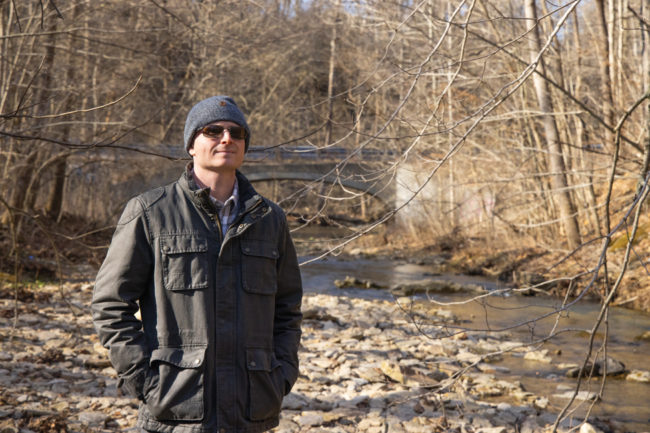
Koryta says he disappointed friends and family with mostly celebrity-free photos of the on-set experience when he returned home, because “I was so much more interested in the details of the way they built sets and how they shot on location. This is a story that was conceived on backpacking trips in the mountains.”
When Koryta told producers that he was interested in watching a shoot that featured smokejumpers, he was told that it would be too high and difficult to reach for him to watch.
“I said, ‘Well, I came up with the book when I was hiking in some really high places that were difficult to get to,’” he says. So they allowed him to come. “That day was by far the most special to me because it felt less like a movie set. It wasn’t some backlot creation, it was shooting on location in rugged terrain … to see the execution of that was by far the best part of the experience to me.”
Another book that is coming to life on film soon is an independent production of supernatural horror thriller So Cold the River, adapted to a screenplay and directed by Paul Shoulberg, with Bloomington’s Pigasus Pictures co-producing. “Paul is incredibly talented. It was all shot at the West Baden Springs Resort, which meant the world to me. The only reason I wrote the book is the existence of that building and all of its history,” says Koryta. Post-production has wrapped on the film, but a release date hasn’t been announced.
“I think it’s better for me across the board, professionally and for my mental health, not to live in Los Angeles.”
And there are more potential projects at hand that Koryta feels optimistic enough about to name. He has sold a pilot and series document for How It Happened— a double-murder mystery set in rural Maine, which “seems like it has a pretty good shot.” And he just closed on a deal to adapt his latest, Never Far Away, with producer Cathy Schulman, who won an Oscar for Crash.

While Koryta’s work has often beckoned him to New York City and Los Angeles, he has no interest in living in either city. “I like college towns in general,” he says. “And I think people in Indiana are pretty pragmatic. There’s an Indiana sensibility that I like, and Maine shares that—maybe on steroids. If you want to talk about the polar opposite of what I would find living in LA, you will find it in Bloomington and definitely in Maine. It’s like there is an active interest in being unimpressed that’s part of the ethos.”
“I think it’s better for me across the board, professionally and for my mental health, not to live in Los Angeles,” he says. “It’s part of the professional identity that I have to go out there and take meetings, things like that, and that’s fine. If I end up working on a show that would be the thing that would force me out to Los Angeles—I have had to wrestle with that idea.”
But Bloomington is where he feels most attached. He has a detached studio lined with bookshelves—designed and built by Bloomington’s Loren Wood Builders—that was made for his writing. It’s a place he goes daily, turns off the Wi-Fi, and spends a few productive hours. And Bloomington is close enough to Indianapolis that it’s easy for Koryta to get to an international airport. Most importantly, he says, he stays here because of people.
“I mean, I love the town, but it really is people. It’s my family—my parents are still here,” he says. “I have lifelong friends here. And I can go on and on about the positive qualities of the community, but I would say, you know, home is people, ultimately.”
Books by Michael Koryta
- Envy the Night
(St. Martin’s Press, 2008) - So Cold the River
(Little, Brown and Co., 2010) - The Cypress House
(Little, Brown and Co., 2011) - The Ridge
(Little, Brown and Co., 2011) - The Prophet
(Little, Brown and Co., 2012) - Those Who Wish Me Dead (Little, Brown and Co., 2014)
- Last Words
(Little, Brown and Co., 2015) - Rise the Dark
(Little, Brown and Co., 2016) - How It Happened
(Little, Brown and Co., 2018) - If She Wakes
(Little, Brown and Co., 2019) - Never Far Away
(Little, Brown and Co., 2020)
LINCOLN PERRY SERIES
- Tonight I Said Goodbye
(St. Martin’s Press, 2004) - Sorrow’s Anthem
(St. Martin’s Press, 2006) - A Welcome Grave
(St. Martin’s Press, 2007) - The Silent Hour
(St. Martin’s Press, 2009)
WRITING AS SCOTT CARSON
- The Chill
(Simon and Schuster, 2020)
SHORT STORIES
- “The Apex Predator”
- “Calculating Route”
- “I’m Still Here”
- “The Dark Side of Sunlight Basin”
- “Winter Takes All”
- “Hiking Through”
- “The Last Honest Horse Thief”


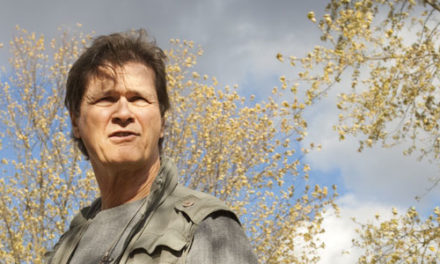
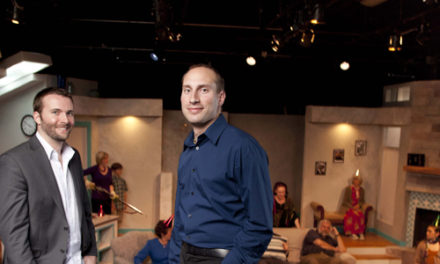

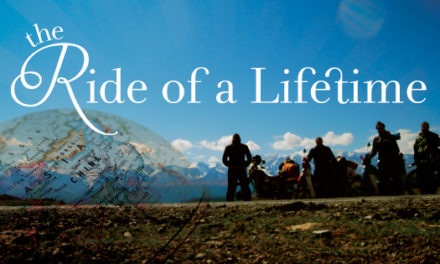





Trackbacks/Pingbacks